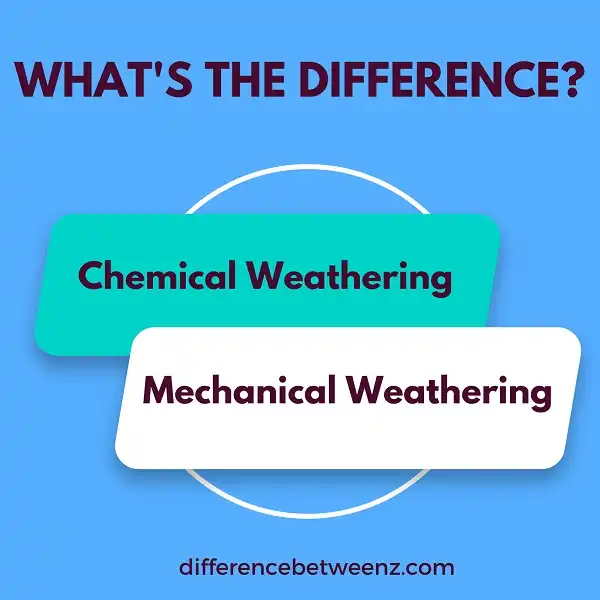Weather is the condition of the atmosphere at a particular time and place. There are different types of weather, which can be categorized as either mechanical or chemical. Mechanical weathering is caused by physical forces, such as wind or water, while chemical weathering is caused by the chemical reaction of minerals in the rocks. In this blog post, we will explore the difference between chemical and mechanical weathering. We will also discuss how each type of weathering can affect rocks and landscapes. Finally, we will provide some examples to help you better understand these concepts.
What is Chemical Weathering?
Chemical weathering is the process by which rocks and minerals are broken down by chemical reactions. This can occur when rocks are exposed to the atmosphere, where they can react with oxygen, water, and carbon dioxide to form new compounds. Chemical weathering can also occur underground, where rocks are exposed to acidic groundwater or hot springs. Over time, these reactions can weaken rock, making it more likely to crumble or break apart.
In some cases, chemical weathering can even change the appearance of rocks, giving them a rusty or stained appearance. While chemical weathering is a natural process that helps to break down rock and recycle nutrients back into the ecosystem, it can also be a problem for human infrastructure. For example, if buildings are made from limestone or other minerals that are susceptible to weathering, they may become weakened or damaged over time. As a result, it is important to understand the role of chemical weathering in both natural and human systems.
What is Mechanical Weathering?
Mechanical weathering is the process by which rocks and minerals are broken down into smaller pieces by physical means. This can happen through a variety of mechanisms, including frost wedging, abrasion, and plant growth. Mechanical weathering is an important process in the rock cycle, as it helps to break down rocks and minerals into smaller pieces that can be transported and deposited elsewhere. This process can also help to create new surfaces on which chemical weathering can take place. Mechanical weathering is a natural process that occurs over time and does not require the use of any external energy source.
Difference between Chemical and Mechanical Weathering
- Chemical weathering and mechanical weathering are processes that Cause the breakdown of rocks and minerals. Chemical weathering happens when water interacts with rocks and minerals to cause a chemical reaction that changes the composition of the rock. For example, when carbon dioxide in the air dissolves in rainwater, it forms weak carbonic acid.
- This acid can then react with limestone, changing it into calcium bicarbonate. Mechanical weathering, on the other hand, does not change the composition of rocks and minerals. Instead, it involves physical processes that break them down into smaller pieces. For example, freeze-thaw weathering occurs when water seeps into cracks in rocks and then freezes.
- The ice expands and exerts pressure on the rock, causing it to crack and break apart. Over time, this process can lead to the formation of large boulders from small pieces of rock. Both chemical and mechanical weathering are important processes that help to break down rocks and minerals over time.
Conclusion
Weathering, the wearing away of rocks and minerals by physical or chemical processes, is an important part of the landscape. There are two types of weathering – mechanical and chemical. Mechanical weathering is caused by physical forces such as wind, water, ice, and temperature changes. Chemical weathering happens when minerals in rocks are broken down into smaller pieces due to the action of water, air, plants, or other chemicals.


